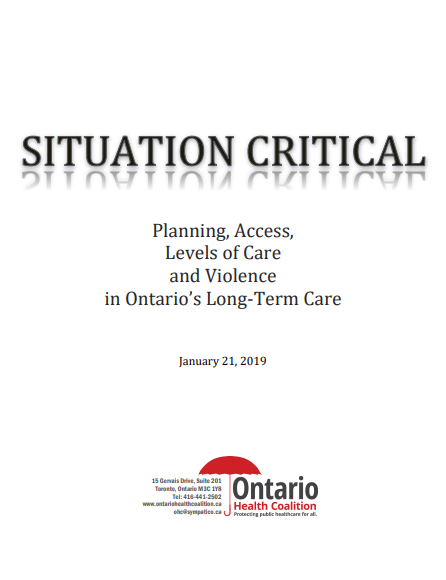''In this report, we look more closely at the evidence of increased need and inadequate levels of care in Ontario’s long-term care homes in which nearly 80,000 people live and their consequences for caregivers and residents, including escalating violence. Our research shows that the increased complexity of residents is partly a function of offloading of more complex patients from hospitals to facilities with insufficient levels of care in order to save money and partly a function of the aging population. We also found that planning, care levels, regulation, and resourcing of long-term care have not kept pace with population aging and patient offloading. This is not the norm. In fact, Ontario’s long-term care homes have extraordinary levels of occupancy and acuity. Access to care is gravely inadequate: waitlists are longer than the entire population of a medium-sized town in Ontario. Levels of fatal violence in the homes are higher than virtually anywhere else in our society. Levels of care are too low to meet need and basic safety requirements and have been falling further behind year after year.''
Source: Ontario Health Coalition


















